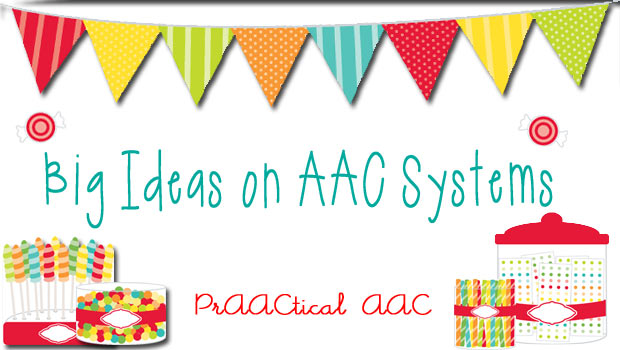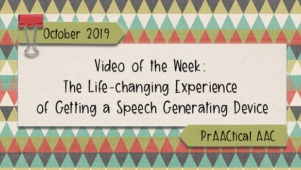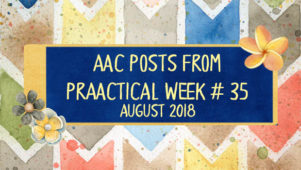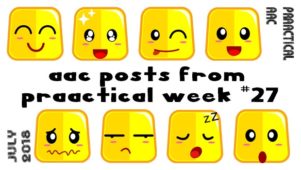I had some great conversations with families this month about AAC and how to effectively translate strategies from therapy and school to a home environment. Although their children were all different ages, had various disabilities, and used a diverse set of AAC tools, there were a couple of common elements in those conversations.One thing that played a central role was this question: What IS an AAC system? We all know the textbook definition of AAC and that it refers to a set of tools, techniques, and strategies used to enhance the communication of people with significant language difficulties. We know that AAC is often subdivided into unaided communication (including gestures, signs, movement, vocalization, etc) and aided communication (such as communication books, speech generating devices [SGDs], and choice boards).But the general case is only helpful if you’re in AAC class or studying for the PRAXIS. In clinical practice, we need to know how this general scenario applies to our specific the specific client. And that is certainly true for supporting families who want to get their children using more AAC at home.
–
We find it extremely helpful to map out the client’s AAC system before a meeting with family members, teachers, or in, our case, student clinicians. It’s a great exercise in clarity. And if we’re not clear on what the client’s AAC system really IS, how successful are we likely to be in getting others on board with implementation?
–
With thanks to Ed Kameenui, who first got me hooked on the notion of ‘Big Ideas’ when I took his doctoral courses in the 1980’s, here are some Big Ideas about AAC systems and their components.
—
1. An AAC system is not the same as an AAC device. Systems, by their very nature, have multiple components. In AAC, the components might be some signs or gestures, some spoken words, a visual schedule, a core language board, and an AAC device. All of the components together make up the AAC system.
–
2. AAC systems should have both aided and unaided components. The AAC device may be terrific, but there are plenty of times when having a quick sign, gesture, or word approximation is more practical.
3. Accept any way of responding that is appropriate in that situation. If you nod your head in agreement, how would it feel to have someone say ‘use your words’?
–
4. Back-up systems are essential. If the device breaks (and it will at some point), what elements of the AAC system will the client use to communicate? Sometimes a ‘no tech’ tools is better for a specific context. AAC device in the sandbox? No, thank you.
–
5. Device vs devices: For many people with AAC needs, there will be two or more communication -devices in their AAC system.
–
6. “Having an AAC device doesn’t make you a communicator any more than having a piano makes you a musician” (Beukelman, 1991). We can’t ever forget that good teaching (and plenty of it) is essential. That’s where the magic happens. In fact, if we do our jobs well, the communicator will feel handicapped without their AAC systems. Don’t be surprised if problems arise when the AAC supports are not there for the client to use.
–
Next time you start to plan goals or do parent/teacher training for the carryover of AAC into the home/classroom, take some time to really think through what that client’s AAC system really looks like. You’ll be surprised at how much a little clarity adds to the total picture.
–





